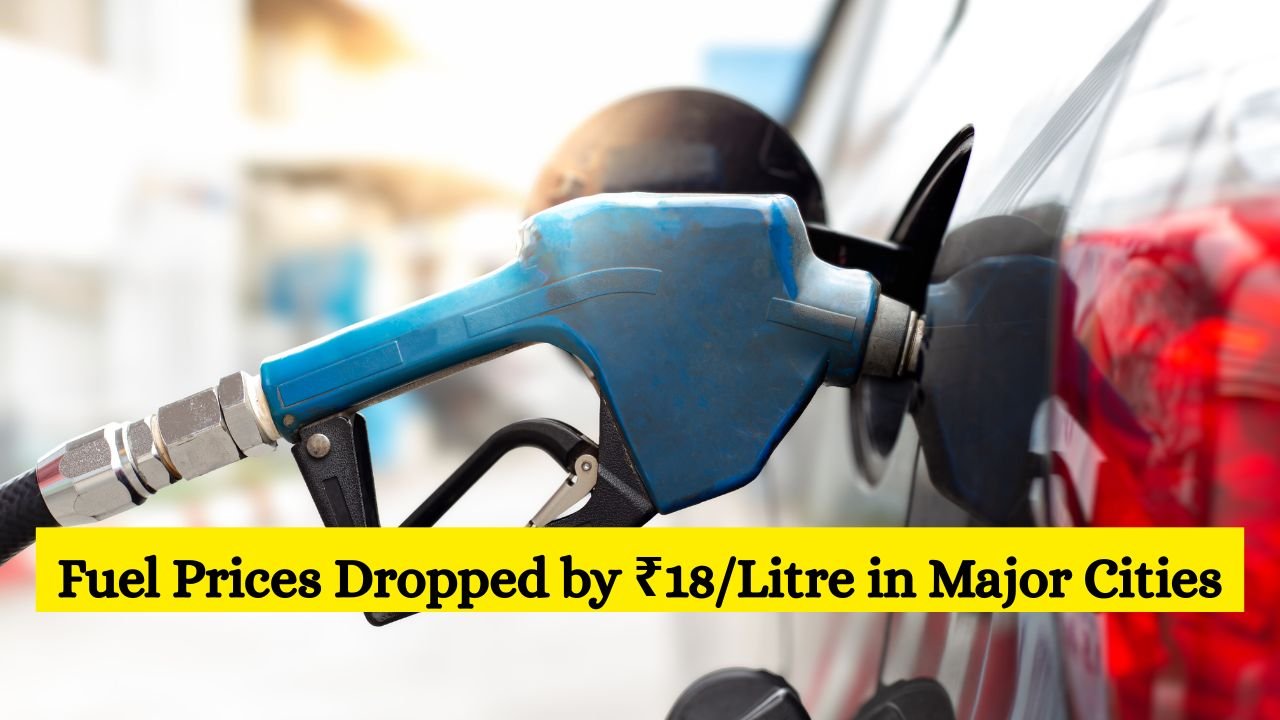Fuel Prices Dropped by ₹18/Litre: Since June 18, India’s five major metros have seen petrol and diesel prices plunge by a whopping ₹18 per litre. It’s one of the most significant single-day cuts in recent memory, and it’s making waves across the country.
Let’s dive into what this means:
A Breath of Fresh Air
Metro dwellers—Delhi, Mumbai, Bengaluru, Chennai, Kolkata—are experiencing immediate relief. Commuters, self-driving families, delivery personnel, and fleet operators stand to save significantly. A cab driver filling 40 L weekly, for instance, now saves around ₹720 each week—extra breathing space for many urban households.
City-by-City Breakdown
While the ₹18 cut is national, its impact varies slightly by city due to local taxes:
| City | Before (₹/L) | After (₹/L) | Drop (₹) | % Change |
| Delhi | 103 | 85 | 18 | 17.5 |
| Mumbai | 109 | 91 | 18 | 16.5 |
| Kolkata | 104 | 86 | 18 | 17.3 |
| Chennai | 106 | 88 | 18 | 17.0 |
| Bengaluru | 105 | 87 | 18 | 17.1 |
Despite uniform central duty cuts, state VAT differences mean slight price variations at pumps.
Broader Economic Ripple
This cut isn’t just about tankfuls—it’s a wider economic breather:
- Reduced logistics costs translate to cheaper transport of goods.
- Inflation cools, as transportation drives many consumer prices.
- Household budgets expand, with savings potentially redirected towards discretionary spending.
These benefits aren’t isolated—they feed into stronger business sentiment and boosted consumer activity.
Reactions from the Streets
Across social platforms, jubilant reactions abound. There were even late-night queues on June 17 at petrol pumps—humans racing to fill up before the cut took effect. Delivery drivers, gig workers, and small-business owners are all seeing their margins perk up—with cautious optimism ruling the day.
How Businesses Are Responding
Logistics firms are already signaling lower shipping charges, and some transport services are reviewing fare structures. FMCG distributors in Delhi have noted that cheaper fuel could help offer more festive discounts. Manufacturers and retail chains expecting smaller input costs view this cut as a growth catalyst.
Caveats to Keep in Mind
Don’t pop the champagne just yet—challenges exist:
- Global oil prices might bounce back, eroding this relief.
- States could adjust VAT/cess to recover lost fuel tax revenue.
- Sustainability is key—is this a smart long-term policy or a short-term populist measure?
Experts suggest monitoring crude trends and state budgets over the next month or two.
India’s Regional Position
Post-cut, India’s fuel prices are now highly competitive in South Asia:
- Sri Lanka: ~₹95/L
- Bangladesh: ~₹120/L
- Nepal: ~₹90/L
- Pakistan: ~₹100/L
- India (metros): mid‑₹80s/L — significantly lower, boosting our regional edge.
This helps Indian exporters and logistics firms gain cost advantage over regional peers.
FAQ
Q: Why this ₹18 cut?
A: A mix of lower global crude prices and strategic government duty reductions.
Q: Will prices stay this low?
A: Hard to say—global trends and state taxes will shape the future.
Q: Can there be further cuts?
A: Unless crude falls further, unlikely in the near term.
Q: How about CNG/LPG?
A: Not impacted immediately, but energy pricing could shift over time.
Q: Will fares drop now?
A: Some local transport and delivery services are reviewing rates—stay tuned.
Final Take
This ₹18-per-litre cut—big, bold, and timely—offers substantial breathing room for urban India. It’s a short-term shock to wallets, but its long-term stabilization depends on policy follow-through and global market trends. For now: enjoy the relief, use the savings wisely, and keep an eye on what comes next.

